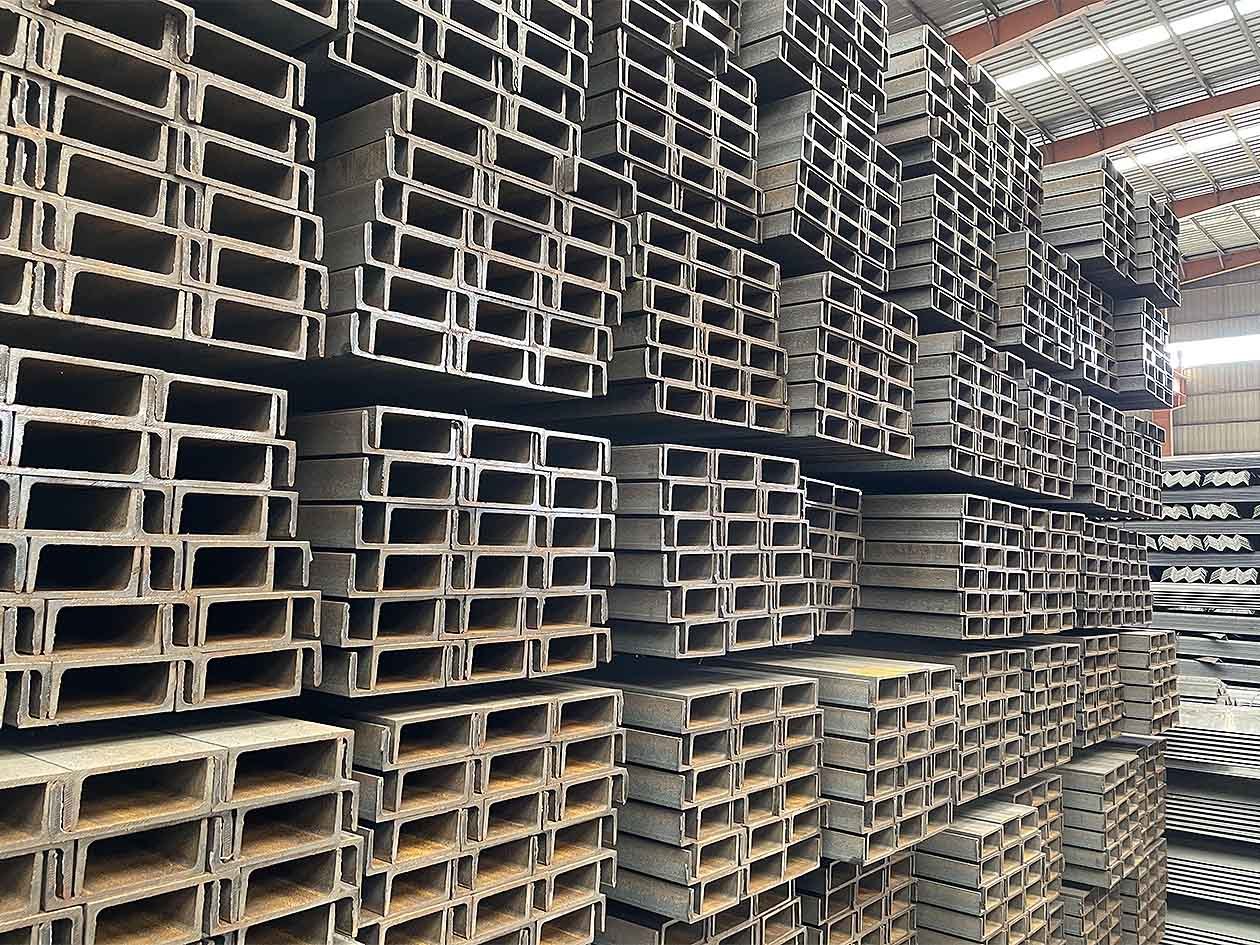


- Details
-
Channel steel, also known as C-section steel or structural channel, is a long, linear metal profile with a distinctive "C" or "U" shaped cross-section. It consists of a vertical web connected to two horizontal flanges (or legs) at the top and bottom, forming a channel-like structure. This shape provides excellent load-bearing capacity, rigidity, and versatility in construction and industrial applications.
Key Features
Material: Typically made from carbon steel (e.g., Q235, A36), stainless steel, or aluminum, depending on strength and corrosion resistance requirements.
Structure:
● Web: The central vertical section that resists shear forces.● Flanges: The two parallel extensions at the top and bottom, providing stability against bending.
● Edge (Lip): Some channels have tapered or rounded edges for added strength.
● Surface Finish: Hot-rolled (rough surface) or cold-rolled (smooth, precise dimensions).
Standard Types:
● UPE/UPC (European Standard): Metric channels with parallel flanges.● C-channel (American Standard): Defined by dimensions like depth, flange width, and weight per foot (e.g., C4×5.4).
● MC (Miscellaneous Channel): Lighter sections with sloped flanges.
Sizes & Specifications:
● Dimensions vary by region (e.g., UPE 80×40×4 mm in Europe vs. C8×11.5 in the U.S.).● Standards: ASTM A36 (U.S.), EN 10025 (Europe), JIS G3101 (Japan).

Manufacturing Process
Hot Rolling: Heated steel billets are passed through rollers to form the C-shape (common for heavy-duty channels).Cold Rolling: Used for thinner, precision channels with tighter tolerances.
Bending & Welding: Flat steel plates can be bent and welded into channels for custom sizes.
Mechanical Properties
High strength-to-weight ratio, suitable for structural support.Good torsional resistance (resists twisting) due to its shape.
Moderate flexural strength (resists bending under load).
Applications And Advantages
Applications:
● Construction: Beams, columns, roof purlins, and wall framing.
● Machinery & Equipment: Frames, brackets, and supports.
● Transportation: Trailer beds, vehicle chassis, and rail components.
● Infrastructure: Bridges, conveyor systems, and electrical conduits.
Advantages:
● Cost-effective compared to I-beams or hollow sections.
● Easy to fabricate (cut, drill, weld) and install.
● Durable and compatible with coatings (e.g., galvanization) for corrosion protection.
Conclusion
Channel steel is a fundamental structural component valued for its efficiency in distributing loads and adaptability across industries. Its design balances strength, lightweight properties, and ease of use, making it indispensable in engineering and construction projects.


Channel Steel
Subcategory
Keyword
- Details
-
Channel steel, also known as C-section steel or structural channel, is a long, linear metal profile with a distinctive "C" or "U" shaped cross-section. It consists of a vertical web connected to two horizontal flanges (or legs) at the top and bottom, forming a channel-like structure. This shape provides excellent load-bearing capacity, rigidity, and versatility in construction and industrial applications.
Key Features
Material: Typically made from carbon steel (e.g., Q235, A36), stainless steel, or aluminum, depending on strength and corrosion resistance requirements.
Structure:
● Web: The central vertical section that resists shear forces.● Flanges: The two parallel extensions at the top and bottom, providing stability against bending.
● Edge (Lip): Some channels have tapered or rounded edges for added strength.
● Surface Finish: Hot-rolled (rough surface) or cold-rolled (smooth, precise dimensions).
Standard Types:
● UPE/UPC (European Standard): Metric channels with parallel flanges.● C-channel (American Standard): Defined by dimensions like depth, flange width, and weight per foot (e.g., C4×5.4).
● MC (Miscellaneous Channel): Lighter sections with sloped flanges.
Sizes & Specifications:
● Dimensions vary by region (e.g., UPE 80×40×4 mm in Europe vs. C8×11.5 in the U.S.).● Standards: ASTM A36 (U.S.), EN 10025 (Europe), JIS G3101 (Japan).

Manufacturing Process
Hot Rolling: Heated steel billets are passed through rollers to form the C-shape (common for heavy-duty channels).Cold Rolling: Used for thinner, precision channels with tighter tolerances.
Bending & Welding: Flat steel plates can be bent and welded into channels for custom sizes.
Mechanical Properties
High strength-to-weight ratio, suitable for structural support.Good torsional resistance (resists twisting) due to its shape.
Moderate flexural strength (resists bending under load).
Applications And Advantages
Applications:
● Construction: Beams, columns, roof purlins, and wall framing.
● Machinery & Equipment: Frames, brackets, and supports.
● Transportation: Trailer beds, vehicle chassis, and rail components.
● Infrastructure: Bridges, conveyor systems, and electrical conduits.
Advantages:
● Cost-effective compared to I-beams or hollow sections.
● Easy to fabricate (cut, drill, weld) and install.
● Durable and compatible with coatings (e.g., galvanization) for corrosion protection.
Conclusion
Channel steel is a fundamental structural component valued for its efficiency in distributing loads and adaptability across industries. Its design balances strength, lightweight properties, and ease of use, making it indispensable in engineering and construction projects.


Related products
Product Consulting

Address: Hengtai Road,Daqiuzhuang Town,Jinghai County,Tianjin,China
Mob: +8615122229899(whatspp)
Phone: +86 22 58171905
Fax: +86 22 58171902
E-mail:info@lefinsteel.com
Get company updates

Tianjin Lefin Industrial Co.,Ltd. All rights reserved City sub-station SEO www.300.cn

